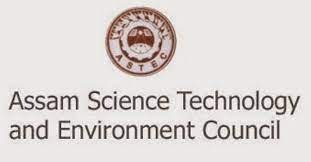Spread the love
The Assam Science, Technology, and Environment Council (ASTEC) is creating a safe haven for producers and shopkeepers to prevent duplication of their work by giving them intellectual property rights (IPR). ASTEC has been receiving 4-5 applications every month for acquiring an IPR.
According to Debashish Dutta, Scientist-B at the Patent Information Centre of ASTEC, there are various types of intellectual property rights, like patents, copyright, design, trademarks, layout designs for semiconductor integrated circuits, plant variety protection for farmers, and geographic indication.
A patent is an exclusive right granted for an invention. It provides protection for the invention to the owner of the patent for a period of 20 years. A geographic indication is a sign used on goods that have a specific geographical origin. It often possesses qualities or a reputation due to its place of origin. The GI is acquired for a period of 10 years. Copyright, however, is a legal term describing rights given to creators for their literary and artistic works, including computer software. A trademark or brand name is a distinctive design that identifies certain goods or services as those produced or provided by a specific person or enterprise. The period of protection for a trademark is generally 10 years and can be renewed indefinitely. We have examples like Dabur, AMUL, Purabi Milk, Patanjali, etc.
Likewise, there are other IPRs in design, semiconductor integrated service, layout design, protection of plant varieties, and farmer’s rights. Each has its own processes for acquiring an IPR.
According to Dutta, any person violating an IPR is penalised by a court of law.
According to the Head of IPR for the Science and Technology Division, Dr. Jaideep Baruah, awareness of getting an IPR is still low. It is because there are many village-level innovators who cannot come to such a high level to think of applying for an IPR. Due to poverty, many cannot think of it either.
ASTEC has also been creating awareness among innovators about registering for IPR. Along with that, it provides financial support to innovators, entrepreneurs, etc. for doing so.

Baruah proudly recalls the GI tagging of Muga Silk with the initiative of ASTEC. "The demand for Muga has been high from the international market as well. So, it is important to send the best material," he said.
On being asked whether tagging or patenting increases the price of the product, Boruah replied that the money of the customer will not be wasted as after tagging they can avail an authentic product.
The Patent Information is an Intellectual Property Rights (IPR) facilitation centre in the public domain that is functioning at the State Science and Technology Councils of the different states in India.
The Patent Information Centre (PIC) in Assam was set up by the Patent Facilitating Centre (PFC) of the Technology Information Forecasting and Assessment Council (TIFAC), Department of Science and Technology, Government of India, in 2003.
From 2003 to the present (2022), as many as 90 patent applications have been filed with ASTEC. Out of these, PIC has grantd patents to 14 applicants. Likewise, only 13 trademarks are accepted to acquire an IPR; two products received the GI tag, and 17 copyright-related rights are registered.
There are provisions for international patenting as well. According to Baruah, compared to patents in the USA, Indian patenting is quite hassle-free. He informed us that there are more applications for IPR, but before getting a registration, it will be difficult for them to tell officially what the emerging IPR issues are on indigenous products.
ALSO READ : Cement companies likely to hike prices between Rs 10-30 per bag: Report